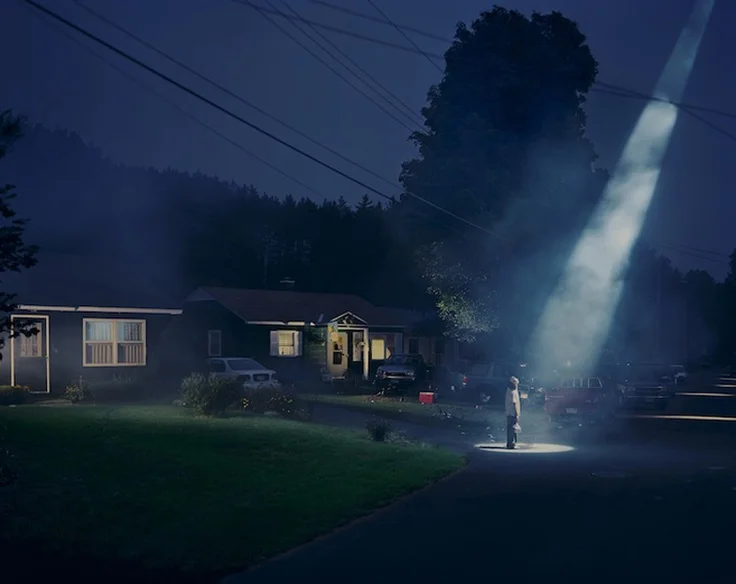Welcome to Mr. Crewdson’s Twilight Neighborhood
Gregory Crewdson conjures images from the debris of our domestic lives, compressing moments into mysterious and mythological spaces. The Cecil B. DeMille of American photography (if DeMille was Orson Welles), Crewdson collaborates with large crews to construct scenes that span the fissure between humdrum and heroic. Further collaboration can be found in Hover, where Crewdson’s singular photos are found beside fiction by the likes of Rick Moody and Joyce Carol Oates. Jen Banbury spoke via cell with Mr. Crewdson as he descended from the north and swept into Gotham on an iron chariot.
conduit: You construct and intimately choreograph the photographs that you make. Do you feel that, in the course of that process, you’re creating the image? Or uncovering something that’s somehow there already?
gregory crewdson: I think it’s both. I’m just coming back from pre-production in Vermont. I’ve been working on an idea for quite a while of this man who’s built this house out in the middle of the street and in this gesture has alienated himself from his family and his community. So now I’m in the process of location scouting for this picture and then working with a very large team of people including carpenters and landscapers to build this house. It’s a many-staged process but ultimately it will be as much about the process and the place that was made as it will be about the final image. It’s all coming together—a sense of reality with artificial production.
conduit: I find that collaborative process so interesting. For instance, you shot a series of photographs in Lee, Massachusetts. Did the town’s participation in making that work somehow affect the myth of the town itself?
crewdson: Yeah, I think so. Strange coincidence—the very next town over is Stockbridge, Massachusetts, where Norman Rockwell painted. And I think that his work, in a very different way, has created a very different myth for that town. He used the people of the town to create his own myth of that place. I think I’m doing the same thing in a sense. And that’s a common occurrence in art—that transformation.


